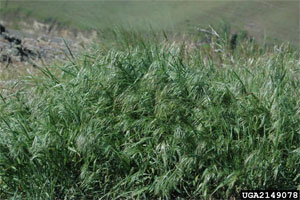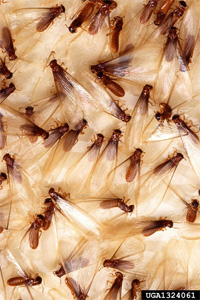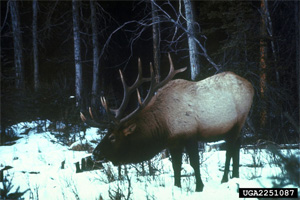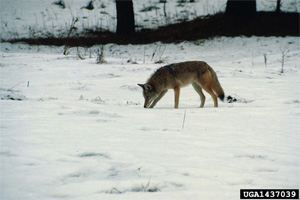|
Population size is a very straightforward concept.
It is simply the number of individuals present in a given area.
In contrast, population growth is a bit more complicated as it depends on the mortality, natality, survivorship and migration into and from populations.

Herbert A. Pase III, Texas Forest Service, www.forestryimages.org
Mortality or the death rate is the number of individuals within a population which die during a given time interval divided by the average population size over that time (Mackenzie et al. 1998).
For example, if we have a deer population of 10,000 at the beginning of the time period and a population of 6,000 at the end of the period, we have an average population size of 8,000.
The given mortality rate is therefore 4,000/8,000 which gives us a mortality rate of 0.5 or 50% overall.
If this change occurred over 10 years, the mortality rate can be expressed as an average of 5% per year.
We can conduct this calculation for either the population as a whole or for individual age classes to produce an age specific mortality rate.
Natality is the birth of new individuals over a period of time.
The natality rate is a reflection of the seasonality of reproduction, the number of individuals capable of reproduction, the length of time reproduction takes etc.
Often, natality rates are density-dependent, for example the 3/2 power law of self thinning in forested stands. We will talk more about density-dependent populations on the next page.
We can also report natality rates for specific age classes.
Survivorship is the opposite of mortality.
Survivorship is often expressed as a life expectancy or the average number of years that an individual of the population will live (Mackenzie et al. 1998).
Just as with mortality and natality, life expectancy can be reported for the whole population or for a given age class within the population.
There are three general patterns of survivorship.
The first has a high survival rate of young and high death rates during old age.
The second has a steady death rate over time (a negative linear pattern).
The third has a high mortality rate in the young with less mortality as age increases.
|




